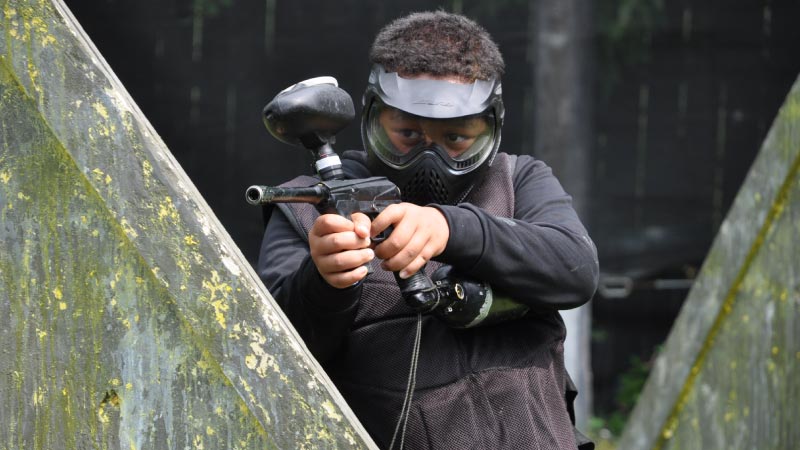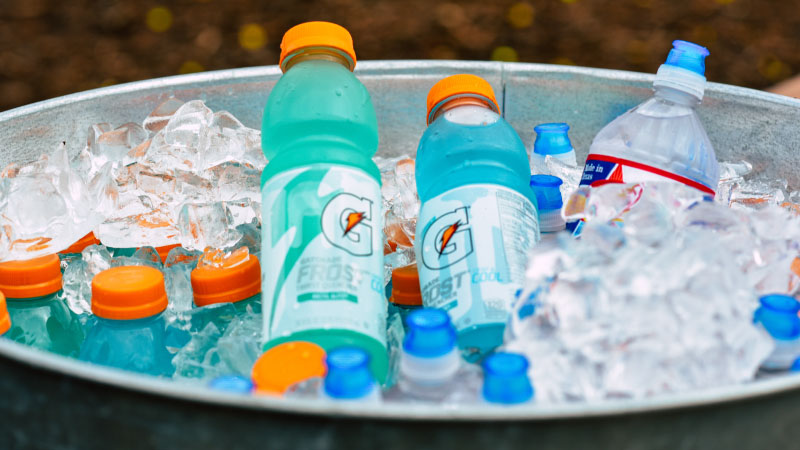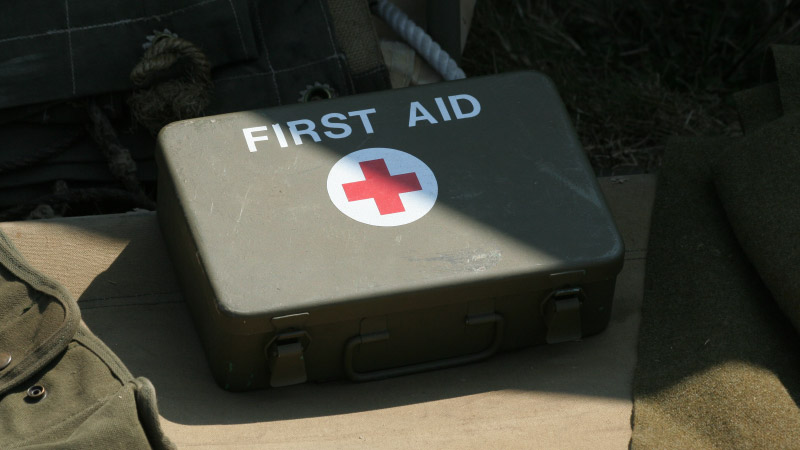
Paintball Bruises: Know Before You Go!

My name is David, and I’ve worked nearly 2 decades in the paintball industry. The one question new players ask more than any other is: “Is paintball going to hurt?” This post is going to answer that question for you and more.
Before we go any further, let’s get the bad news out of the way - getting hit with a paintball doesn't exactly tickle. With that said, the vast majority of people find paintball an enjoyable experience that isn’t painful. Let’s jump in and discover how a few simple techniques will make your paintball adventure exciting, fun and bruise free.
High Impact vs. Low Impact
Without getting caught up in the debate about paintball sizes, it’s important for new players to understand that paintballs are sold in two varieties, low and high impact.
Most people are familiar with the original, high impact variety, commonly referred to as .68 caliber (cal). These marble-sized paintballs travel at a greater velocity and have a larger mass than low impact paintballs. Simply put, players are much more likely to get bruises from paintball when playing high impact paintball than they are engaging in low impact paintball.

Low impact paintballs, referred to as .50 cal, are much smaller, have 25% less mass and are shot at a lower velocity. While this reduces discomfort, it still delivers an intense rush. We always recommend low impact paintball for non-competitive players who want to avoid paintball bruises and welts.
Visit the low-impact paintball for kids page for more information about low impact and .68 and .50 caliber paintballs.
Prevent paintball bruises with clothing and protection options
Your clothing choices will impact your paintball experience. For most players, shorts and a t-shirt is sufficient, but sensitive players should cover bare skin, especially if you’ll be playing high-impact paintball. In that case, choose long-sleeved shirts and pants that are weather appropriate. In cool weather, you can layer up.

Competitive players use special paintball-specific protective gear, but professional padding isn’t required for low impact players. For high impact paintball, layers are usually sufficient, but the additional protection of padding or gloves may add peace of mind.
Neck & Knuckles
The most exposed and tender areas of the body are the neck and knuckles. The best protection for the hands is a pair of gloves which can be purchased at most paintball parks. The neck is a little more challenging but bandanas are an inexpensive way to cover up. Bonus tip is to dip the bandana into a cooler of icy drinks to cool down during the summer.
Private Games
Some groups play a very empathetic and polite version of paintball, rarely shooting each other more than once and offering an opponent the option to surrender at close range. Others embrace the adrenaline fueled nature of paintball with aggressive play.
Who you play with might be the most important factor of your paintball experience. That's why, at parks like Urban War Zone, private games are the standard. Here, you're never forced to play with strangers – an unfortunate occurrence at many other parks. By choosing your own team, you can ensure a more comfortable and enjoyable introduction to the sport.
Stay Hydrated

Proper hydration is an effective way to enhance performance and reduce fatigue while playing paintball, but it’s also vital for skin health. Hydrated skin will handle a welt or bruise much better than thirsty skin.
How long do paintball bruises last?
A bruise or welt from a paintball should naturally diminish in a few days and is generally healed in about a week, but dehydration can prolong recovery time. Stay hydrated for optimal performance and quick recovery!
Embrace the adrenaline, but know Your Limits

Treatment Options
If you find yourself with a minor bruise or welt after playing paintball, here are some steps you can take to reduce healing time. Remember to consult a healthcare professional if you have any concerns or if you experience more severe injuries:
Cleanse the Area:
Wash the area with soap and water. This step is crucial as it cleans the wound and significantly reduces the chance of infection.
Manage Swelling:
Start with an ice pack to reduce swelling, followed by a hot pack to help increase circulation to the affected area.

Promote Healing:
- Epsom Salt Bath: This is a highly recommended option as it helps both the healing of bruises and welts but also aids in the recovery of any muscle fatigue.
- Compression Bandage: Compressing the affected area with a bandage can prevent a bruise from getting larger, and it also serves to protect the area from dirt or bacteria that could potentially cause an infection.
- Topical Ointments: Creams such as neosporin and aloe vera can be beneficial in the healing process while helping to prevent scars. If you have allergies or sensitive skin, be sure to consult a licensed physician before applying any topical treatments.
Tattoos, Piercings, and Jewelry
Your stylish accessories and body art can be at risk during a paintball game.
Jewelry
It’s fairly common for players to lose necklaces and jewelry on the field. The smaller the item, the harder it is to find when it inevitably falls to the ground. While we generally find lost items, one particularly devastating incident comes to mind where we weren’t able to locate a diamond that fell out of its setting during a game. Don’t let that happen to you. The best practice is to remove all jewelry before the game, including watches, rings, earrings, and necklaces. This reduces the risk of losing or damaging expensive, sentimental or priceless items on the field.

Tattoos
For those with body art, it's important to consider the potential effects a paintball can have when it collides with your skin. To protect your tattoos, consider covering them with layers of clothes to protect your arms and legs and prevent hits on bare skin.
Piercings
A direct hit to a piercing can lead to swelling or tearing, which may need immediate medical attention. To prevent this, we advise removing piercings before you start the game, especially earrings that hang below the mask that could get pulled out and increase the risk of minor injuries.
To sum it up...
Paintball should be an enjoyable experience. Choose low impact paintballs, wear appropriate clothing, protect sensitive areas, and opt for private game play to prevent minor injuries like bruises. Stay hydrated, know your limits, and take steps to promote healing if bruises occur. Remove jewelry, cover tattoos, and consider removing piercings.
